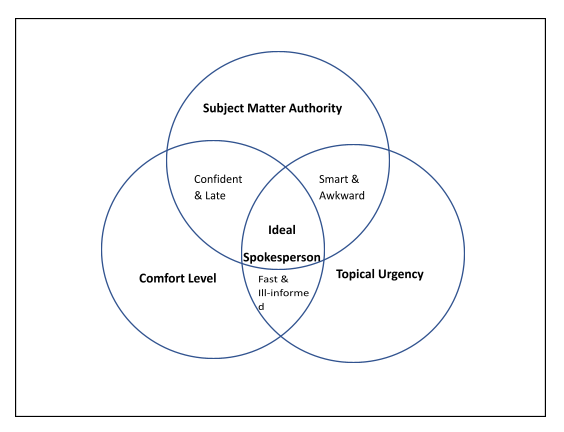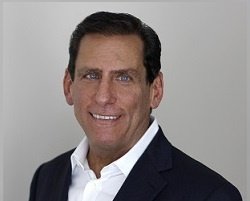Using Research to Counteract Executive Emotion
Mark Weiner, Chief Insights Officer, Cognitio Insights
For some in the financial services sector the phenomena of GameStop represented an existential threat. For others, it presented an opportunity to comment and take a position. Unforeseen events like these are only accelerating: Black Lives Matter and the Capitol Insurrection commanded explosive and widespread notoriety. In response, courageous executives took bold public action, none of which could be effectively accomplished without prior planning and consideration.
In swift response to the Capitol riots on January 6, PricewaterhouseCoopers, AT&T and Comcast acted swiftly and clearly to withdraw PAC funding to Republican lawmakers determined to challenge the presidential election results. Lockheed Martin, Deloitte and North Grumman pulled funding from all lawmakers. Their ability to marshal resources mattered and they generated admiration from most quarters. Some organizations hesitated before acting while others did nothing. Some of these companies may have chosen to remain idle not because of indifference to morality, intolerance, or ethics but, instead, they feared getting it wrong due to the situation’s velocity their own unpreparedness. Better in situations like this to organize so your organization is informed, ready and mobilized when and if the time arises.
Communications research can help.
Serious strategic planning for professional communicators focuses attention on target audiences, key media to reach those audiences, delivery of intended messages and timing. Every year, public relations departments and agencies refresh their plans to align on a reasonable and methodical course to achieve stated objectives.
Inevitably, something upsets even the best strategies. It may be a breaking news event on which your organization qualifies (or feels compelled) to comment. Or perhaps a passing mention from one CEO to another at the clubhouse. And most readers can remember the moment your competitor appeared in the headline of a story “that should have been ours.” In situations like these, executives often respond emotionally rather than rationally, and resources instantly refocus to enable the organization to “respond at once.” And so, the dash begins: “who can say what to whom, how quickly, and to what effect?”
Data-informed communications planning helps to mitigate the chaos. An annual landscape analysis aided by regular updates, top-line pulse checks and instant alerts enable organizations to respond more thoroughly, more purposefully and more efficiently when it’s time to act. The process reflects a need to align on an overarching organizational communications framework in advance of a rapidly rising event or trigger. An annual landscape analysis provides public relations professional with a structure including target media, meaningful topics as well as a platform to track breaking unanticipated messaging events.
We should always track for overarching organizational reputation attributes like “ESG,” “leadership,” “quality of products and services,” “workplace environment” and “financial performance.
How to begin?
- A landscape analysis assesses your business environment: your organizational priorities from top leaders; preferences and concerns of external and internal stakeholders including employees, media, regulators, and customers. The analysis may combine all or part of the following communications research instruments: surveys, social listening, journalistic media analysis and “audits” of smaller groups like key executives, journalists, and opinion leaders.
- Apply research findings to identify the messages that are most compelling to your stakeholders and the most credible coming from your organization. This may not capture every unanticipated event but it may enable you to swiftly align your intended messaging more accurately within an explosive time. Highlight the media that are most trustworthy and most engaging to your stakeholders. Look to reinforce your strengths revealed through the research (important but more complicated: address any competitive shortfalls)
- Deciding on “what you say” and “to whom” takes us to “who says…” You must align with executives (not just professional communicators) to determine which leaders combine confidence, expertise and responsiveness.
- Research reveals the most important messages and media (the “what we say” and the “to whom.” Align the high-priority topics to the most qualified spokesperson and create a version of the Venn Diagram below for each. You may need to raise levels of media comfort or heighten awareness to the need for responsiveness through additional training as the overlap may be scarce.

- Beyond the baseline landscape analysis, continue to monitor news and social using a real-time platform and deeper analysis when required. Agile pulse check reporting reveals emerging issues by rerunning the landscape analysis in miniature. More frequent top-line analysis enables the communicator to quickly assess what competitors do: Are they rushing in? How do the media react to the position others take? Is this an opportunity to positively differentiate ourselves or a shiny waste of time? Of course, in certain cases, companies, brands and the executives who lead them acted fearlessly when their ethics could not withstand compromise, hesitation or silence.
- Closely monitor the event to determine if, how and when to refine course as necessary.
If you’re only reacting, you’re already too late. To gain an advantage, we must consult with our sponsors in advance to help decide which topics merit a response and which do not. With advanced planning and thorough communications research, you reduce the time required to reach a purposeful decision by knowing who should say what, to whom, when and to what effect.
 About the Author: Mark Weiner is Chief Insights Officer at Cognito Insights, an international research-based communications consulting firm. He is the author of “PR Technology, Data and Insights.”
About the Author: Mark Weiner is Chief Insights Officer at Cognito Insights, an international research-based communications consulting firm. He is the author of “PR Technology, Data and Insights.”
“This story originally appeared in PR News.”

